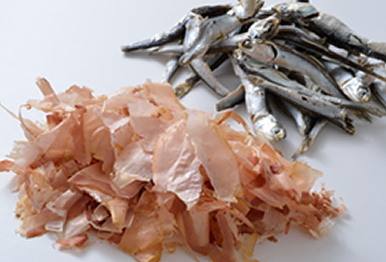Is inosinate the umami component in cured ham?
The umami in cured ham is not inosinate, but glutamate.
Although, like katsuobushi (dried bonito flakes), ham is an animal product, it contains almost no inosinate. Inosinate is produced when ATP (adenosine triphosphate), the energy source in animal muscles, is
broken down posthumously by enzyme action. If this disintegration becomes too advanced, inosinate will turn into another, different substance, from which umami is absent. This means that inosinate content
first rises after death, then falls.
Raw pork is rich in inosinate, but cured ham is pork that has been salted then aged over a long period of one to two years. During that time the inosinate content declines, reaching almost zero by the time
the ham is ready for consumption. Meanwhile, glutamate increases during aging, and is concentrated by the drying process. This compensates for the drop in inosinate and makes cured ham a food with umami to
spare.












